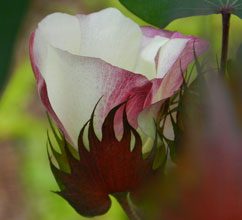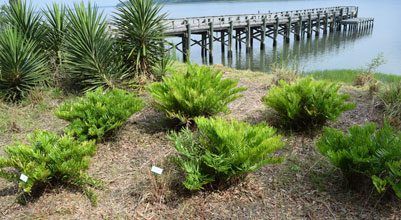 Oh my, where to start? Like most of you, I was gobsmacked by Hurricane Matthew. He was simply not kind to our gardens – or our homes. Cleaning up afterwards was overwhelming, wasn’t it? The storm came at us with wind, copious rain, a salty storm surge and, ouch, it toppled large trees, crushing our homes, our shrubbery and everything else under a canopy of branches. The clean up, besides being exhaustive, will be lengthy and it will take even longer to evaluate the true extent of the damage to our gardens.
Oh my, where to start? Like most of you, I was gobsmacked by Hurricane Matthew. He was simply not kind to our gardens – or our homes. Cleaning up afterwards was overwhelming, wasn’t it? The storm came at us with wind, copious rain, a salty storm surge and, ouch, it toppled large trees, crushing our homes, our shrubbery and everything else under a canopy of branches. The clean up, besides being exhaustive, will be lengthy and it will take even longer to evaluate the true extent of the damage to our gardens.
Leaving the tree trunks and large limbs to deal with; have you ever seen so many small twigs? It is surprising the Live Oaks and Pines have any foliage left. The twigs are stuck in every nook and cranny they could find. There is not a shrub in my yard without more than a few needing to be picked out by hand. This will take a while.
My husband and I were among the fortunate few who did not have to deal with a downed tree or trees and I am still pinching myself over that. Even the few large limbs that came down around our home did minimal damage. However, living on the marsh, our backyard was inundated with salt water and buried under a layer of pine straw and wrack. Wrack is the debris that floats up on high tides. In our case it was mostly made up of dead, decaying Spartina grass. This material would be a great compost or mulch but it is important that we get it off the tops of our plants so they can get the much needed light and air.
The perennials and annuals that were in the lower section of our property had some salt water inundation and they definitely look fried. I thought they were all dead but I already see a few green leaves coming up from the base of some. Others, I am sure, are history.
The shrubbery that was bathed in salt water is another story. I am just not sure if the extended exposure will totally kill the plant or just the foliage. I have noticed large Loropetalums whose roots were under water have lost all their leaves. The wild azalea, Rhododendron canescens, is a deciduous shrub that would have lost its leaves anyway, but when Matthew drenched the roots with salt water the process was hurried along. Will they make it? Time will tell.
Clemson’s position on salt water inundation in the garden is to flush your soil repeatedly with fresh water to dilute the salt. Some of the old timers around this part of the Lowcountry use gypsum to bind with the salt so the roots can’t take it up. If your soil already has an abundance of calcium (determined by a soil test) adding more in the form of gypsum could cause a pH problem. Just irrigating your garden is the simplest and the safest route to go for now. I’ve been running my sprinklers a little longer than usual in the areas where we had salt water damage.
Dealing with physical damage to trees and shrubs plays an important role right now. Large trees with broken limbs may need a certified arborist. I know these folks are in high demand at the moment but think safety first. Broken branches need to be removed and dealt with in a timely manner. The longer a tree is stressed the more opportunity for insects or disease to invade it. Proper pruning prevents tissue damage. For smaller trees that you can do yourself, the Clemson Extension has a good fact sheet on pruning, just Google HGIC 1003 for research based pruning information.
The general rules regarding the pruning or shaping of damaged shrubbery are put aside in this case. While this may not be the opportune season, any broken limbs must be removed carefully as quickly as possible and with sterilized clippers. Sanitation is important to prevent disease and insect infestation in stressed plant material. We may lose a season of flowering but long-term health of the plant is key.
Let’s not use any fertilizers on our gardens this fall. We don’t want to encourage any new top growth; it would be at the expense of the roots or foundation of the plants. As always compost and mulch will be welcome.
Should you choose to put some color back into your gardens, the garden centers are chock full of bright new plants and this is the ideal time to establish them. Be sure to add lots of a soil amendment like mushroom compost when planting. Pansies, poppies and snapdragons are good choices for fall planting.
Like Laura Lee mentioned in her last article, I took notice of the blooming plants along the road as we evacuated. We took the local roads to our old home town, Columbia. It seemed like every ditch was filled with Black Eyed Susans, mile after mile of them. It made the ride bright and cheerful in spite of our anxiety over the evacuation. We passed acres of not quite ripe cotton; there were small puffs of white along with many dusky pink and white flowers giving the fields a faint, hazy pinkish glow. I am hopeful the immaturity of the plants was enough to help it withstand Matthew’s rains. Too much rain on fully developed cotton can be devastating. We saw Sycamore trees with bright yellow leaves but that was the only fall color we saw. When it became obvious we could not return to Beaufort as promptly as we’d anticipated we went on to visit our son in Asheville. No leaf color there either due to the drought they are experiencing. One unusual plant I did see blooming along side of the road up there was a Sweet Pea Vine, Lathyrus Odoratus, certainly blooming out of season. It reminded me that I’ve had good luck planting Sweet Pea seeds in November. They only bloom in spring, as soon as it gets hot they die down, but they are a lovely, and not often seen around here, spring bloomer. ReneesGarden.com has a good selection of the easy to grow seeds.
Gardeners are an optimistic lot; we are always looking forward to the next season. I choose to focus on the Sasanquas and Camellias that are about to beautify our landscapes and hide any of the scars Matthew has caused.







